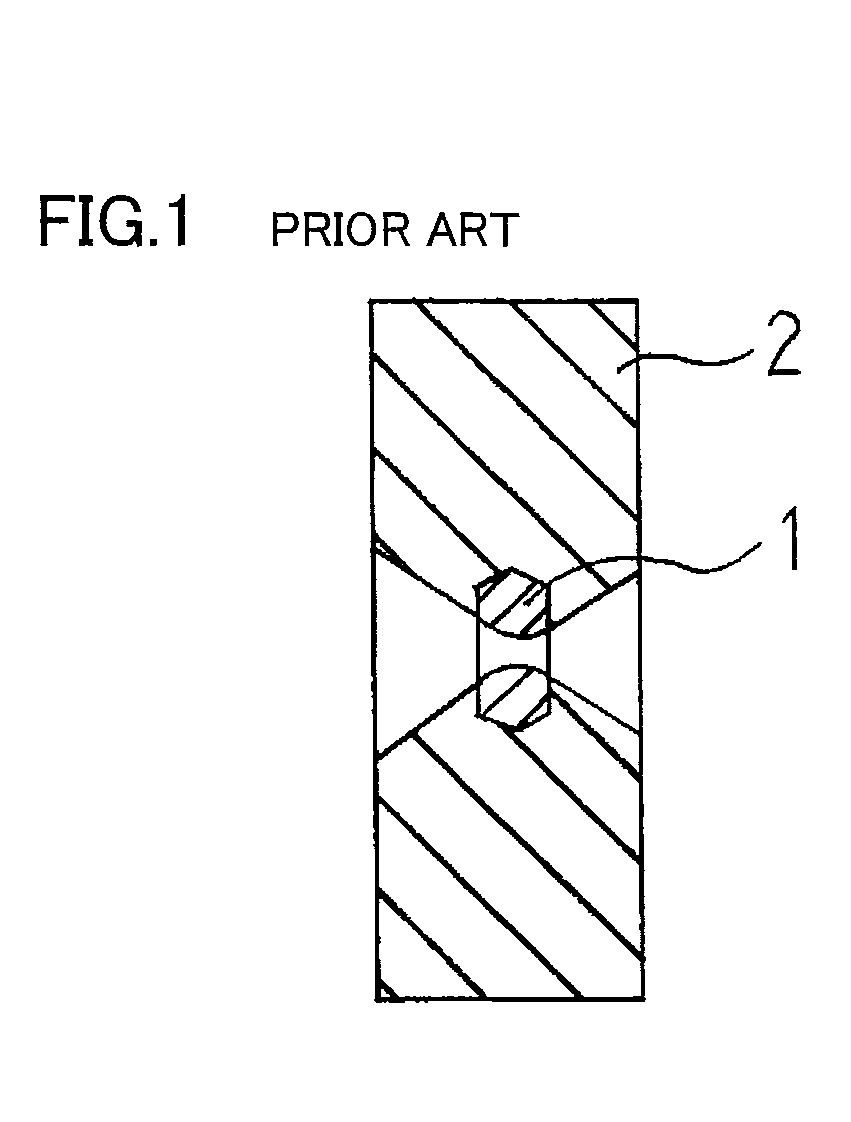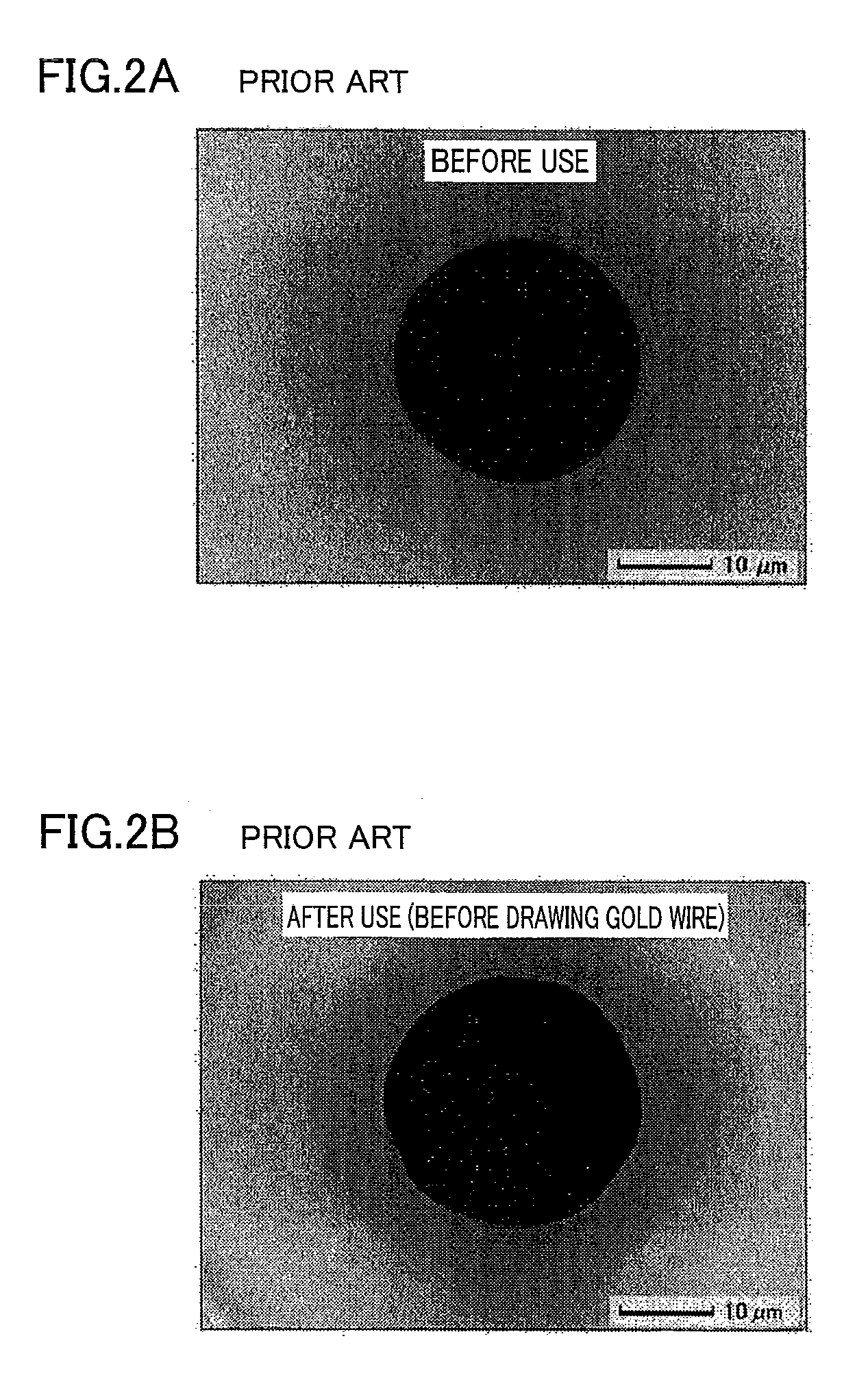Wire drawing die
a wire drawing and die cutting technology, applied in the field of diamond dies, can solve the problems of excess stress, uneven wear of wire drawing, deterioration of wire surface, etc., and achieve the effects of preventing plastic deformation and high wear resistance, less uneven wear, and less wear
- Summary
- Abstract
- Description
- Claims
- Application Information
AI Technical Summary
Benefits of technology
Problems solved by technology
Method used
Image
Examples
examples
[0043]Graphite powder good in crystallinity with a grain size of 0.05 to 10 μm and a purity of 99.95% or more, or synthetic diamond powder with a grain size of 0.05 to 3 μm, with ultra-finely pulverized graphite powder or a variety of non-graphite type carbon materials such as glassy carbon powder, C60 powder, and carbon nanotube powder added thereto, was introduced into an Mo capsule and sealed, and treated under various pressure and temperature conditions for 30 minutes using an ultra high pressure generation apparatus. The generated phase of an obtained sample was identified by X-ray diffraction, and the grain size of a constituent particle was examined by TEM observation. Further, the surface of the obtained sample was mirror polished, and the hardness at the polished surface was measured with a micro Knoop hardness meter. Table 1 shows experimental results.
[0044]
TABLE 1Starting MaterialProduct (Polycrystalline Diamond)AddedSynthesis ConditionsGrain Size ofGrain Size ofKnoopBase...
PUM
| Property | Measurement | Unit |
|---|---|---|
| grain size | aaaaa | aaaaa |
| grain size | aaaaa | aaaaa |
| grain size | aaaaa | aaaaa |
Abstract
Description
Claims
Application Information
 Login to View More
Login to View More - R&D
- Intellectual Property
- Life Sciences
- Materials
- Tech Scout
- Unparalleled Data Quality
- Higher Quality Content
- 60% Fewer Hallucinations
Browse by: Latest US Patents, China's latest patents, Technical Efficacy Thesaurus, Application Domain, Technology Topic, Popular Technical Reports.
© 2025 PatSnap. All rights reserved.Legal|Privacy policy|Modern Slavery Act Transparency Statement|Sitemap|About US| Contact US: help@patsnap.com



